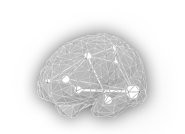Analyze Network
Users may analyze preexisting networks that have been uploaded publicly by the UMCD and other users. The UMCD offers two analytical approaches:Analyzing a network allows you to run a quick analysis on any publicly shared network. After making your selections in the fields below and clicking the Analyze button, the following information will be presented:
| General | Connectivity |
|---|---|
|
|
| Graphs | Plots |
|
|
You can also view the regional report, download regional measures as a .txt file or download the entire report as a PDF.
The calculation of all graph theory metrics are based on their implementations in NetworkX. The following metrics are calculated:
- Degree
- Clustering Coefficient
- Betweenness Centrality
- Regional Efficiency
- Participation Coefficient
- Characteristic Path Length
- Small Worldness*
- Gamma**
- Lambda***
- Sigma (gamma/lambda)
- Modularity (determined using the Louvain method with this program)
- Spring layout
* Small Worldness attributes gamma (normalized clustering coefficient) and lambda (normalized path length) are calculated with respect to a population of random networks. Real networks are randomly rewired by 5000 double edge swaps . The random networks have the same degree distribution as the real networks and are connected. To minimize computation, only 10 random networks are constructed.
** Gamma is the ratio of the real network clustering coefficient to the mean of the random networks' clustering coefficients: cc_real / cc_random
*** Lambda is the ratio of the real network characteristic path length to the mean of the random networks' characteristic path lengths: cpl_real / cpl_random
Additional Analysis Details
- For matrices uploaded with negative values, the weights are shifted such that the negative weights become the weakest positive weights.
- For matrices uploaded with non-numeric values (inf or NaN), those values are set to 0.
